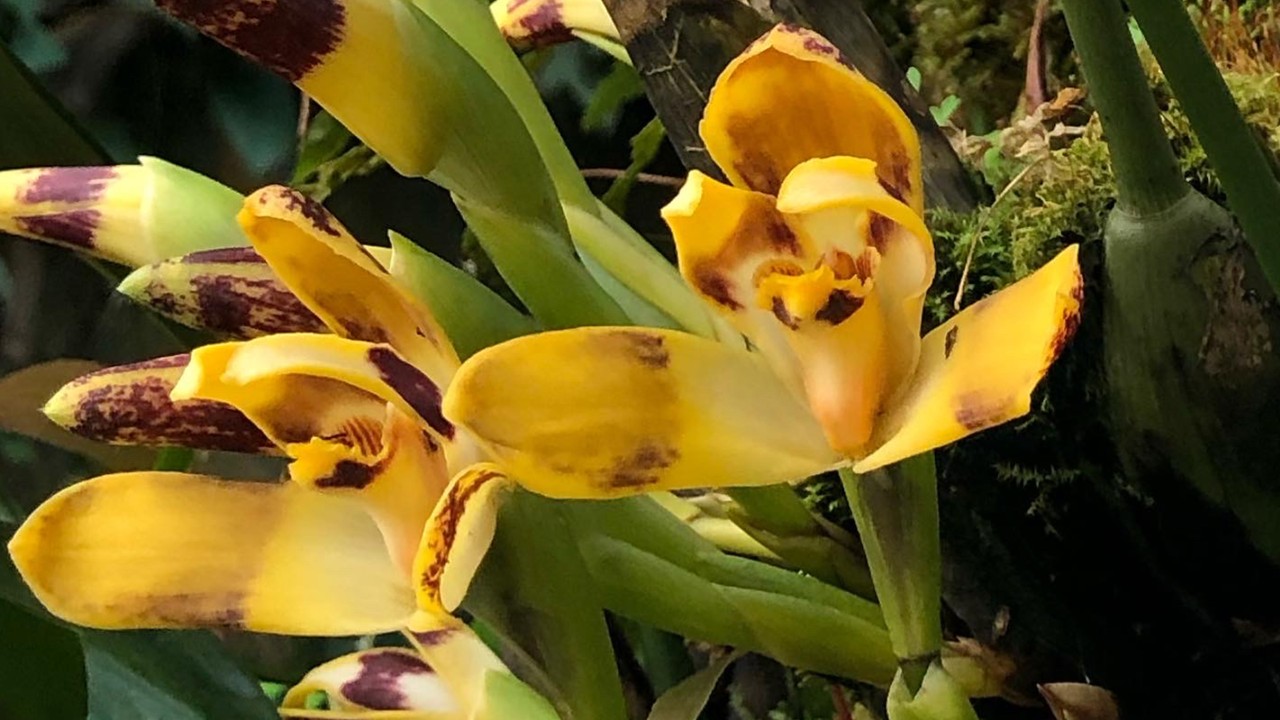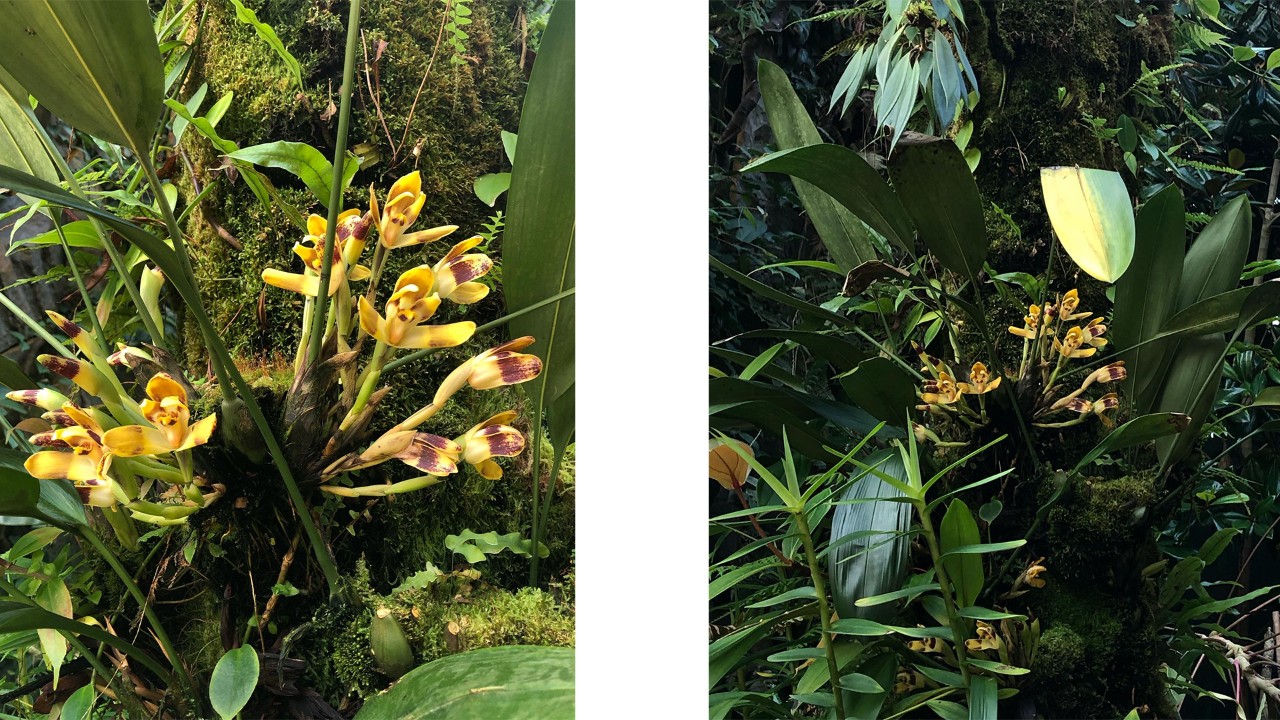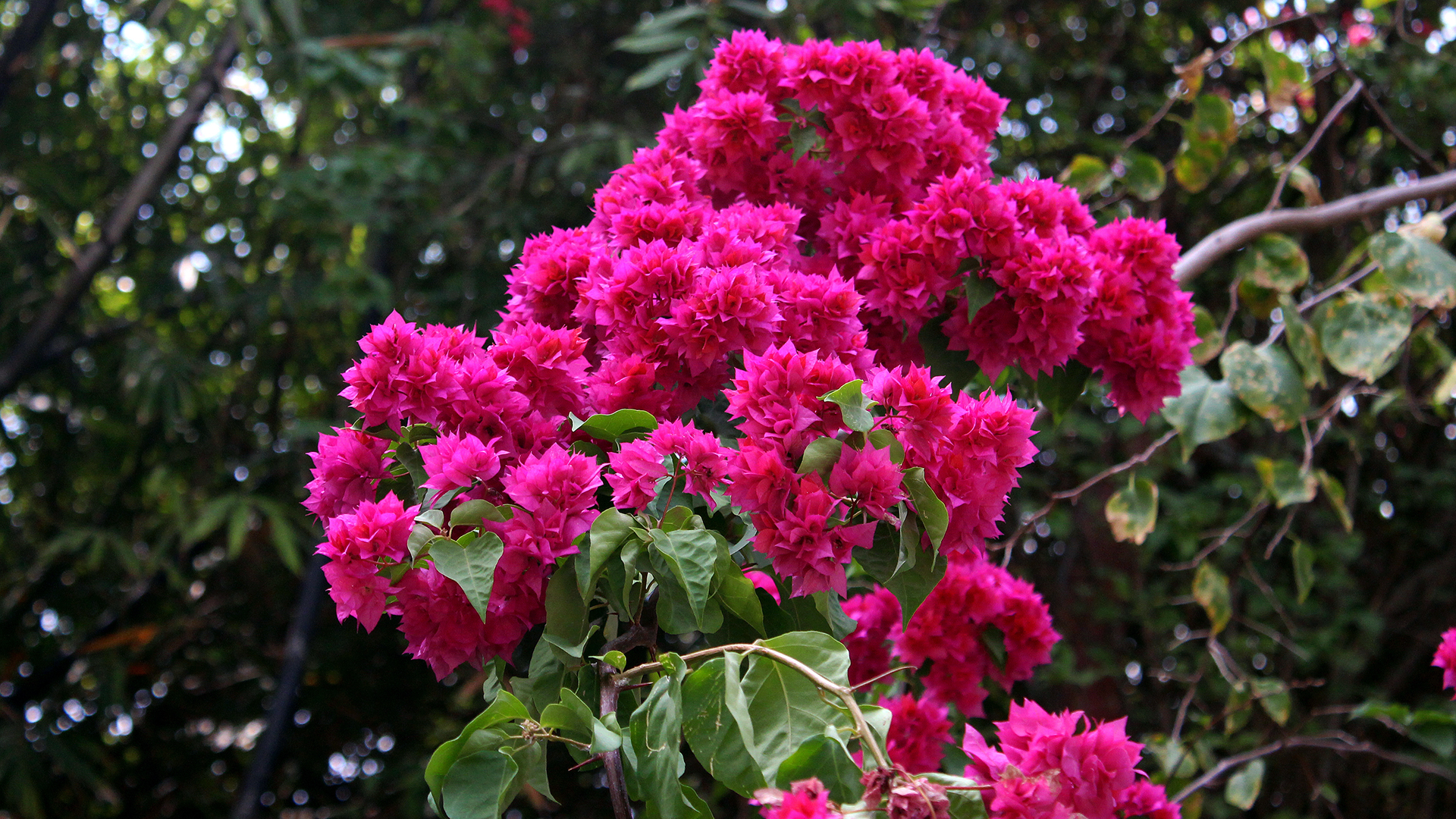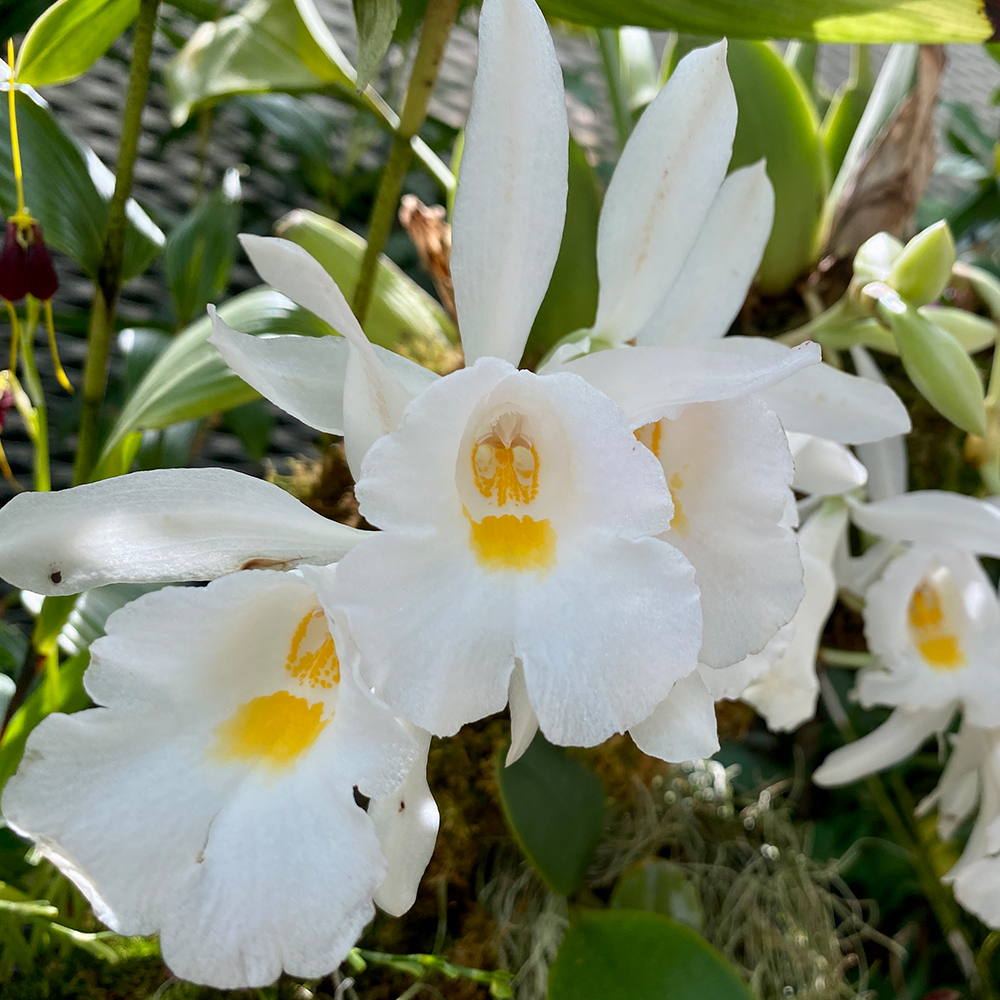Perry’s Maxillaria (Maxillaria perryae)
 Flowers of Perry’s Maxillaria (Maxillaria perryae)
Flowers of Perry’s Maxillaria (Maxillaria perryae)
Maxillaria is a large and diverse genus in the orchid family, with many morphological forms and characteristics. The native range of Maxillaria extends from Florida through the West Indies and Central America to South America.
Also commonly known as spider orchids, flame orchids or tiger orchids, the genus name ‘Maxillaria’ is derived from the Latin word ‘maxilla’ which means jawbone, as some of the species have a lip or column which looks like a protruding jaw. Most Maxillaria orchids are epiphytic, although there are some species which are terrestrial and lithophytic as well.
Maxillaria orchids have round or oblong pseudobulbs and each of them have one to four lanceolate leaflets. Some species produce only a single flower while others produce clusters of flowers at the base of each pseudobulb. The flower size ranges broadly from 1 cm to more than 15 cm in diameter. Certain Maxillaria species are fragrant, including Maxillaria tenuifolia, known as the coconut orchid because its flowers emit a coconut-like scent.
 Perry’s Maxillaria in full bloom at Cloud Forest’s Lost World.
Perry’s Maxillaria in full bloom at Cloud Forest’s Lost World.
Maxillaria perryae is one of the many Maxillaria orchids in the Gardens' collection currently in bloom in Lost World of Cloud Forest. Named after its discoverer, Ann Perry, this medium-sized orchid is native to the wet tropical cloud forest of the Ecuadorian Andes, at elevations from 750 to 1550 meters.
This epiphytic orchid has ovate, furrowed pseudobulbs which each have two elliptical leaves. A single bright yellow and brown-striped flower up to 5 cm in diameter is produced from the base of each mature pseudobulb.
Do check out Perry’s maxillaria growing on a tree fern at the entrance to Cloud Forest!
Written by: Arthur Voo, Senior Research Executive (Research and Horticulture)
Arthur has been working closely with plants for more than 10 years, whether in a park, nature reserve or glasshouse. These days, if he isn’t taking care of plants in the glasshouses, he likes to spend his time hiking and looking for interesting plants in the wild.


/1000x1000-thumb-pride-of-burma-1.jpg)
